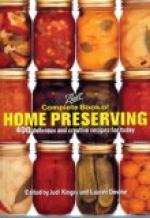[Illustration: The drawing-room.]
CONSIDERATIONS IN BUYING
There are so many vases, jugs, bronzes, medallions, jars, and bowls that one must needs walk steadfastly to avoid buying just for the pleasure of it, whereas each piece must be chosen with reference to the place it is to occupy and to its associates. Any piece of genuine Japanese art ware, of which Cloisonne is perhaps the best known; old or ancestral china; objects of historical interest; different examples of American pottery, among others the Grueby, Van Briggle, and Teco, with their soft, dull glazes, and the Rookwood with its brilliantly glazed rich, mellow browns, its delicately tinted dull Iris glaze, and other styles which are being brought out; Wedgwood with its cameo-like reliefs; the rainbow-tinted Favrile glass; the Copenhagen in dull blues and grays—all these embody, each in its individual way, the requirements of art bric-a-brac.
But the brown Rookwood will overshadow the Copenhagen, and the multicolored Cloisonne will kill the Iris, and so each piece must have a congenial companion if any. And above all, don’t crowd! Bric-a-brac needs breathing room, and individual beauty is lost in the jumbling together of many pieces in a heterogeneous maze of color, which confuses and wearies the eye. All the fine-art product asks is to be let alone—a small boon to grant to so great worth.
“Tip-overable” flower holders defeat their own ends—utility—but there are many which are well balanced and beautiful, too: tall, wide-mouthed cut, Bohemian, or more simple glass for long-stemmed roses, carnations, or daisies; brown Van Briggle, Grueby, or Rookwood bowls for nasturtiums, golden rod, and black-eyed Susans; green for hollyhocks, dull red for dahlias, gladioli, etc., flowers and receptacles thus forming a true color symphony.
Parian and Carrara marble, immortally beautiful, we can but gaze at from afar, but masterpieces of the sculptor’s chisel are ours at small cost in ivory-tinted plaster reproductions of the Venus de Milo, the Winged Victory, busts and medallions of famous personages, etc., which may with truth be called “art for art’s sake.”




